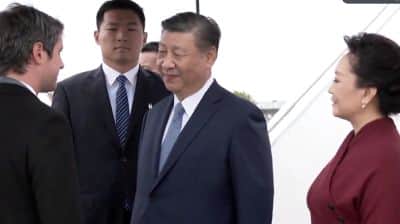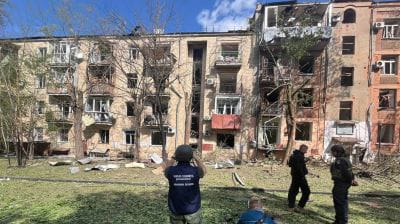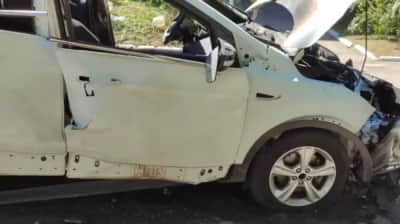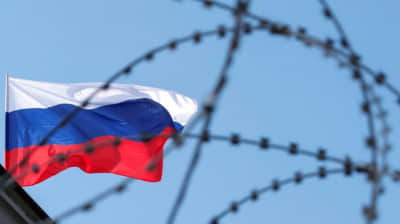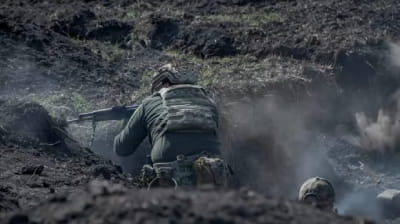Russia to keep launching large-scale attacks on Ukraine – ISW
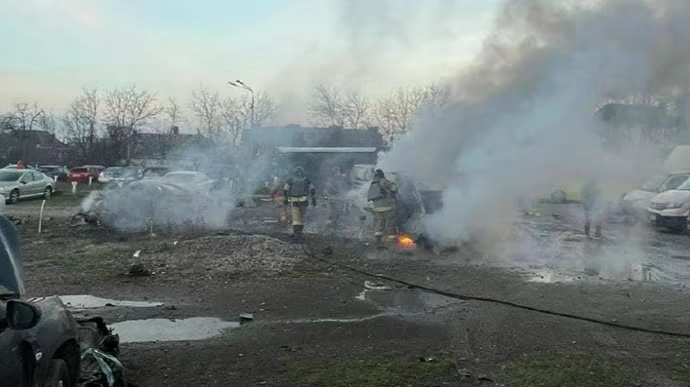
Experts at the Institute for the Study of War (ISW) have stated that Russia will continue to launch large-scale attacks on Ukraine, as it did on 29 December 2023.
Source: ISW
Details: Russian forces carried out the largest series of missile and drone strikes on Ukraine on the morning of 29 December since the start of the full-scale invasion.
The ISW report says that the series of attacks carried out by Russian forces on 29 December appears to be the culmination of several months of Russian experimentation with various combinations of drones and missiles, as well as attempts to test Ukraine's air defence systems.
ISW analysts pointed out that over the past few months, Russian forces have conducted a series of missile and drone strikes of varying scale, using various combinations of drones, cruise missiles and ballistic missiles.
According to the ISW's 21 October assessment, Russian forces were likely to diversify the mix of missiles, glider bombs and drones used in strike sequences to find weaknesses in Ukrainian air defences and optimise a strike package similar to the one launched by Russian forces on 29 December.
The Russians may have deliberately accumulated a variety of missiles during the autumn and early winter of 2023 to create a more powerful strike sequence and apply lessons learned from recent reconnaissance and surveillance missions, namely the use of Shahed attack drones to bypass Ukraine's air defence systems and the use of missiles to inflict maximum damage on intended targets.
The ISW emphasised that Russia will continue to conduct large-scale attacks against Ukraine in an attempt to undermine its morale and ability to sustain its military efforts against Russia.
To quote the ISW’s Key Takeaways on 29 December:
- Russian forces conducted the largest series of missile and drone strikes against Ukraine since the start of the full-scale invasion on the morning of 29 December.
- The strike package that Russian forces launched on 29 December appears to be a culmination of several months of Russian experimentation with various drone and missile combinations and efforts to test Ukrainian air defences.
- Russia will continue to conduct strikes against Ukraine at scale in an effort to degrade Ukrainian morale and Ukraine’s ability to sustain its war effort against Russia.
- Current Russian missile and drone reserves and production rates likely do not allow Russian forces to conduct regular large-scale missile strikes, but likely do allow for more consistent drone strikes, which can explain the recent pattern of Russian strike packages.
- The Kremlin's efforts to sufficiently mobilise Russia's defence industrial base (DIB) in support of its wartime objectives, including large-scale strike series, may been more successful than Western officials previously assessed due in part to Russia’s ability to procure military equipment from its partners and the redistribution of Russia’s resources for military production purposes.
- Russian forces have likely routinely attempted to draw and fix limited Ukrainian air defence systems away from the front, and the Russian strikes on 29 December follow recent indications that Ukrainian air defences may be presenting significant challenges to Russian aviation operations along the frontline.
- Western aid remains vital for Ukraine’s ability to defend against Russian strikes, and the end of such aid would likely set conditions for an expanded Russian air campaign In Ukraine.
- Western leaders largely viewed the massive Russian strike as evidence that Putin’s maximalist goals in Ukraine remain unchanged, in line with ISW’s long-standing assessment that Putin is not genuinely interested in a ceasefire or any sort of negotiated settlement in Ukraine.
- Russian forces made recent confirmed advances northeast of Bakhmut and south of Avdiivka as positional engagements continued across the entire line of contact.
- The Russian Ministry of Defence (MoD) announced on 29 December that it has completed Russia’s autumn 2023 conscription cycle, which began on 1 October.
- Russia continues the forced integration of occupied areas of Ukraine into the Russian system using social services and infrastructure restoration projects.
Support UP or become our patron!


